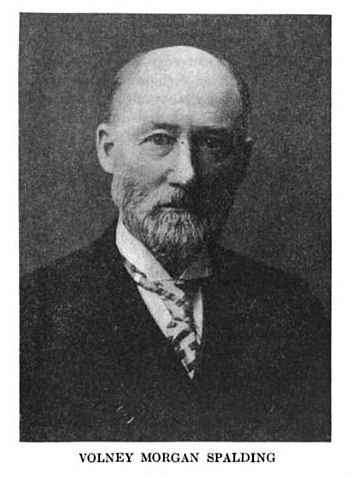Meet Tumamoc's Pioneers & Heroes
Frederick Coville
Volney Spalding
Daniel MacDougal
William Cannon
Burton Livingston
Godfrey Sykes
Francis Lloyd
Burt Bovee
Forrest Shreve
Effie Spalding
Ray Turner
Paul Martin
| |

|
The Desert Botanical Laboratory of the Carnegie Institution opened for business on the seventh of October, 1903. Within weeks, it had a visit from a distinguished, partly disabled professor from the University of Michigan. In 1877 Professor Volney Spalding taught the world's first forestry course. He wrote botany books. And he was a tireless, effective advocate at the national level for forest conservation at a time when America's forests in our northeastern states were decimated, disappearing and seemed doomed. So what was Volney Spalding doing in the Sonoran Desert? Why was he knocking on Tumamoc Hill's brand new door? Prof. Spalding had a debilitating case of infectious arthritis, the sort that we know today may be the result of a tick bite. Maybe Lyme Disease? His physician had recommended our climate and Spalding did not want to retire. The new Desert Botanical Laboratory seemed like a gift from heaven. He became its very first visiting scientist and retired from the University of Michigan the following year. |
|
But the lab seemed to be a mismatch to Spalding's interests — No forest! Instead, it was devoted to understanding what allows desert plants to survive despite extreme heat and drought. Spalding joined the Desert Botanical Laboratory's effort. By the spring of 1905, Spalding had worked on the Hill long enough to wonder at the astounding variety of species and habitats. He wanted to describe and understand the interactions between all these different species. He wanted to find out what would happen to their populations in the course of many, many years. And so Spalding set up 19 permanent study plots around the property. Each one was a square, 10 m on a side, with corners marked by iron stakes. He photographed the plots in detail so that each individual plant could be identified. Spalding knew he would not live to see this work completed but he wanted to start it. In 1906, on behalf of Volney Spalding, the Carnegie devoted about 20% of its entire laboratory budget to putting up an old-fashioned, cedar-post and barbed-wire, 5-mile-long fence around all of the Tumamoc Ecological Reservation. That fence excluded human uses and let Spalding begin his careful studies. He continued them for three years after which his arthritis was so bad that he had to hand it all over to his successor, Forrest Shreve. He died at a sanatorium in Loma Linda, California, 12 November 1918. Nine of Spalding's plots, today the world's oldest ecology study plots, still exist on the Tumamoc Hill Ecological Reservation and are still being studied. | |